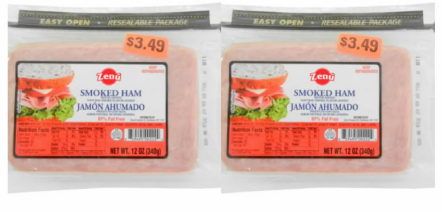Tershakovec v. Ford Motor Company, Inc., --- F.4th ----,
2023 WL 4377585, No. 22-10575 (11th Cir. Jul. 7, 2023)
Discussion
of district court opinion. Ford advertised its Shelby GT350 Mustang as
“track ready.” “But some Shelby models weren’t equipped for long track runs,
and when the cars overheated, they would rapidly decelerate. A group of Shelby
owners sued Ford on various state-law fraud theories and sought class
certification, which the district court granted in substantial part.” Ford appealed
and the court of appeals tinkered with the certification, over a dissent that
thought that enforcing consumer protection laws in this case would violate the Constitution
in multiple ways (edging close to the claim that the class action mechanism
violates Article III).
The key question was predominance, which depended on whether
the specific state laws at issue required proof of reliance, whether reliance
could be presumed, and if so under what circumstances.
As for the facts:
The Shelby is an upgrade of the
standard Mustang and, importantly here, was advertised as “an all-day track car
that’s also street legal.” Track-capability refers to the vehicle’s capacity to
perform at higher-than-normal speeds in a controlled environment—like, say, on
a racetrack. Track-readiness was a central theme in Ford’s Shelby advertising.
Yet, of the five Shelby trims, the Base and Technology trims
lacked “transmission and differential coolers,” a feature—originally included
as standard on all Shelbys—that is designed to prevent engine overheating.
Without them, the Shelbys compensate at high RPMs by reverting to “limp mode,” which
reduces the vehicle’s power, speed, and performance to avoid engine damage—and
is inconsistent with track-capability.
“On appeal, twelve separate claims remain, arising under the
laws of seven states: California, Florida, Missouri, New York, Tennessee,
Texas, and Washington.”
The parties focused on reliance, so the majority did as
well, dismissing the dissent’s claim that reliance and causation are inherently
intertwined as inconsistent with governing state law. See, e.g., Carriuolo v.
Gen. Motors Co., 823 F.3d 977, 983, 986 (11th Cir. 2016) (Florida) (holding
that plaintiffs “need not show actual reliance on the representation or
omission at issue,” even when causation is an element). Thus the majority also
declined to address the manifold constitutional claims made by the dissent.
The majority did, however, find that the district court
erred by overgeneralizing the set of cases in which reliance can be presumed to
those cases where a defendant’s representations to the entire class were
uniform. But this can only be done if the underlying state law allows for it. “Affirmatively
proving reliance is a very individualized inquiry, the kind that would
predominate over other common questions in a class action. By contrast, where
the presumption of reliance applies, it does so generally and can therefore be
resolved on a class-wide basis.”
And then the majority does something very weird, albeit (it
says) prompted by the parties’ concessions. It says that presuming reliance
from materiality often is only appropriate where the cause of action is
omission-based, relying on cases decided under the federal securities laws. I
have no idea why those are relevant (and indeed the majority seems to
understand that California, at least, does not take that position, agreeing
with the district court that a uniform material misrepresentation can lead to a
presumption of reliance).
From that, the court then rejected plaintiffs’ argument that
this was an omissions case; at its core, this case was about
misrepresentations, not omissions. And it rejected plaintiffs’ invocation of Klay
v. Humana, 382 F.3d 1241 (11th Cir. 2004), abrogated in part on other grounds
by Bridge v. Phoenix Bond & Indem. Co., 553 U.S. 639 (2008), for the
proposition that common evidence about misrepresentations can be used to prove
reliance on a class-wide basis, because there the misrepresentation that a HMO
would pay for procedures was the central factor driving the transaction. “While
one who provides services in exchange for a payment relies only on the payment
guarantee, a purchaser of a car may choose to rely on any of a number of
marketing and branding representations.” (I mean, so might the provider of
medical procedures, especially in a world where they can sue the patient for
any underpayment; this bright line does not seem consistent with many state law
decisions I’ve seen and seems to underweight the idea of material
misrepresentation in particular.)
With that out of the way, claims based on state laws that
didn’t require reliance could proceed on a classwide basis, and claims based on
state laws that didn’t presume reliance couldn’t. For claims based on state
laws that sometimes presume reliance, the majority examined whether reliance
could be presumed.
No reliance required: Florida Deceptive and Unfair Trade Practices
Act; N.Y. Gen. Bus. Law § 349(a); Washington’s consumer-fraud statute; and the Missouri
Merchandising Practices Act.
No presumption of reliance, therefore no certification: Texas
Deceptive Trade Practices-Consumer Protect Act and common-law fraud claims
under Washington, New York, and
Tennessee law.
Causes of action that require proof of reliance but allow it
to be presumed in certain circumstances: The usual
California claims, both statutory and common-law, fell in this category. On
remand, the district court should consider whether “the defendant so
pervasively disseminated material misrepresentations that all plaintiffs must
have been exposed to them.” If so, certification would be appropriate.
But California and Texas classes for breach of implied
warranty and violations of the federal Magnuson-Moss Warranty Act required
further analysis. The district court first needed to decide “whether California
and Texas law require pre-suit notice, an opportunity to cure, and
manifestation of the defect.”
Superiority: “Ford fears that jurors will have to remember
testimony from multiple witnesses, all while keeping track of the class
members’ states, the applicable common-law rules and statutes, and burdens of
proof.” The district court thought that “appropriate jury instructions” and
“multiple verdict forms that tick through the [varying] elements of [the]
certified state class[es]’ statutory and common law fraud claims” would
suffice, but the majority was more worried. Given that some of the claims had
been kicked out, on remand the court “should consider the manageability
challenges anew on remand and should more clearly articulate a plan for
addressing them to ensure that the difficulties of managing the class action do
not impede the fair and efficient adjudication of the case.”
Senior Judge Tjoflat concurred as to the claims that were
tossed out and dissented as to the claims kept alive, engaging in a
wide-ranging rejection of state law precedents as unconstitutional or
inapposite or just wrong or all of the above. I didn’t know that federal courts
(other
than the Supreme Court) were supposed to tell state courts they interpreted
state legislation wrong, and I suspect that’s one reason the majority doesn’t
engage with the dissent much. We’re obviously in a period of great
constitutional doctrinal change, and so disregarding positions as “off the wall”
is a risky game, but I will just sketch out what Judge Tjoflat says are the
constitutional problems rather than recount all the arguments state by state.
The FTCA declares unlawful “[u]nfair methods of competition
in or affecting commerce, and unfair or deceptive acts or practices in or
affecting commerce.” That’s vague, but the FTC tells businesses they’re
violating the Act before punishment (I … didn’t think that was the standard for
avoiding unconstitutional vagueness). Importantly [for its constitutionality],
the FTCA doesn’t allow for damages or a private right of action. (!!!! Judge
Tjoflat mentions civil penalties, but doesn’t explain why in his view they are ok.)
Even when state laws explicitly refer to FTC standards,
then, they have different constitutional constraints because they authorize
private actions for backward-looking damages. But vagueness when barring
misrepresentation is less troubling than vagueness when barring unfairness,
including because misrepresentation comes with an inherent causal mechanism.
Plus, prior decisions under the statute can limit vagueness:
First, we can look to prior
decisions under the statute. “Unfair business practice” might not in itself
tell a cruise ship company that it cannot charge customers an additional fee,
label it a “port charge,” then pocket some of that extra money as profit. But a
previous case decided by a court under the consumer protection statute dealing
with that situation would.
Or we can provide notice by using the common law definition
of fraudulent misrepresentation, where the common law provides the notice. (Treating
the common law as clear and natural and non-evolving is an important part of
the conservative judicial project, but it’s used so incoherently that I’ve
never been able to develop a full account.)
Either way, when there’s a misrepresentation, reliance is
required (I believe option 1 required reliance because the baseline was
requiring reliance so any previous case must have either imposed a reliance
requirement or announced a change.) Harm only occurs if there’s reliance (Judge
Tjoflat is no fan of price premium theories). Here, “[s]ome of the class
members (1) may not have seen the advertisements at issue, (2) may not have
wanted a track-ready car, or (3) wanted merely to collect the car without ever
driving it around the track.” They couldn’t have relied on the alleged
misrepresentation. [Especially for (3), that’s a bold factual claim.] No
reliance means no causation, and none of the statutes at issue here explicitly
disclaims reliance.
All those state court cases talking about contributing cause
versus but-for cause, or presuming reliance from materiality, don’t count,
because “by reading out a reliance element in all cases, a court usurps the
legislature’s power and attempts to bind future courts in a way inconsistent
with our conception of judicial power.” “Our” here is doing a lot of work, not
just in an ideological way but also in terms of putting Article III constraints
on state courts.
Certifying a class here therefore poses problems of free
speech, due process, separation of powers, and standing. [Oh look, the Article
III challenge to the class action mechanism I’ve been waiting for has arrived!]
Free speech: “While the First Amendment does not protect
untruthful commercial speech, the judicial elimination of a causation element
makes a speaker liable for speech with or without the speech actually harming
anyone. This chills protected speech.” It would be fine under the First
Amendment to enjoin deceptive commercial speakers or hold them liable for the
actual damage they cause, but not to assess damages even for consumers who
weren’t deceived. [And statutory damages? Punitives? Statutory penalties?] Even
though a consumer protection law only prohibits deceptive commercial speech, without
reliance, “any rational businessperson would stand so far away from the
ill-defined line between outlawed advertising and permissible advertising—thus
chilling protected speech—to avoid the potentially catastrophic consequences of
damages to all.” [No citation to cases about chilling commercial speech,
because the current doctrine is that commercial speech is hardy enough to
resist chill.] Prophylactically prohibiting “potentially misleading—and
therefore protected—speech” “goes well beyond that necessary to further a
state’s interest in protecting consumers from misrepresentation.” [That doesn’t
even follow! “Potentially misleading” is a new concept and not the same as “misleading”—or
at least it is currently.]
Due process: bound up with the above, but worse with a class
action. Where reliance ought to be an element of a claim, class actions violate
due process because unnamed plaintiffs might get relief without having a
meritorious individual claim. “Much as a court eliminating causation from the
traditional elements of negligence would deprive a defendant of property
without notice—thus denying the defendant due process—so would excusing the
reliance (and therefore causation) element in these state consumer protection
statutes.” It would be a judicial taking! [One thing that fascinates me is the
on/off characterization of causation, reliance, damages, etc. If one thinks
that presumptions and probabilities are appropriate subjects of legal rules,
this imagined field of infinite liability becomes much more bounded.]
Anyway, without reliance and thus causation, there’s also an
Article III standing problem. An objective test for a forward-looking injunction
is fine, but not for damages. “[E]ven though ‘Congress [or a state legislature]
may elevate harms that exist in the real world before [the legislature]
recognized them to actionable legal status, it may not simply enact an injury
into existence.’ ” TransUnion. Plus, the state shouldn’t be able to
delegate enforcement power into private hands because they aren’t
democratically accountable.
And finally, there’s a separation of powers problem because
any state court that announces that a state statute doesn’t require showing
reliance in a misrepresentation case has usurped the legislature’s power and
rewritten the statute. This makes the free speech problem worse because state
legislatures have the police power to protect citizens from injury, but courts
don’t.
And now we get to presumptions: a rebuttable presumption of
reliance can’t possibly apply to any of the claims in this case. Such
presumptions are only allowed when the party with the burden of rebuttal has
better access to the evidence, and consumers have better access than sellers to
evidence about what motivated them. [This is probably untrue as a matter of
consumer psychology and marketing knowledge, and it also doesn’t seem to me to
describe the full range of rebuttable presumptions that exist, either. Does the
TMA’s rebuttable presumption of irreparable harm to trademark owners put the
burden on the party who has most access to the evidence? This seems like “common
law as fixed, natural, and just as I think it should be” again.] Plus, allowing
Ford to rebut the presumption would make a class action unmanageable.
So it would have to be a conclusive presumption, which has all
the problems above: California courts shouldn’t have created it either for the
statutes or for the common law (even if it were correct about the statutory standard
“as a linguistic matter”). State courts holding otherwise aren’t entitled to
full faith and credit because they don’t “wrestle” with the constitutional
questions (and resolve them as Judge Tjoflat wants).
Likewise, though Florida’s FDUTPA explicitly requires courts
to interpret the statute by giving “ ‘due consideration and great weight’ to
Federal Trade Commission and federal court interpretations of section 5(a)(1)
of the Federal Trade Commission Act,” it makes “no sense” to say, as Florida
courts have, that because the FTC Act allows suits without proving reliance, so
should the FDUTPA. “How the FTC Act treats reliance has nothing to say about
the FDUTPA’s damages provision,” since the FTCA doesn’t allow private damages,
only prospective relief or “civil damages.” The court here should also ignore the
Michigan Supreme Court because it gave short shrift to due process concerns in
interpreting its own law.
Judge Tjoflat has been on the bench for decades, but I do
wonder whether he’d have written this opinion before a few years ago, given the
swing-for-the-fences approach many judges in his circuit are now willing to
take.

















